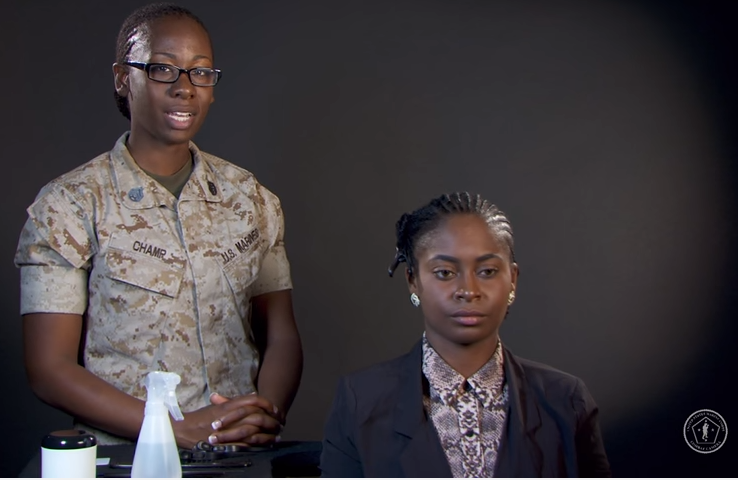Last Spring 2014, the US Army released a new hair policy that unfortunately banned two protective styles commonly worn by black women: the Two –strand twists and locs.
As you can imagine, it got tremendous backlash with people calling the policy racially insensitive.
That firestorm led to a comprehensive review of all hair policies. After receiving a letter from the Congressional Black Caucus, Defense Secretary Chuck Hagel urged all branches of the U.S. Military to review their respective uniform and hair policy.
All of the armed forces held their own respective reviews. Here’s how it went down:
Unlike the other branches, the Marine Corps undertook a longer review. They consulted with stylists, put out surveys and in the end , Staff Sgt. Cherle Wright proposed the addition of locks and twists, according to the Marines.
Then Commandant Gen. Robert B. Neller approved the new female hairstyle recommendations that were made by a Marine Corps uniform board, the Marines said in a statement.
The changes give female Marines more ways to wear their hair while still maintaining a professional and neat appearance, Marine Corps officials said in their statement. Locks and twists, in particular, may be easier for some female Marines to maintain while deployed and are less costly and time-consuming to maintain than other approved styles, officials said.
And get this: The Marines took it a step further to specifically describe the way the twists should be arranged down to their size and spacing!
• A lock as a section of hair that twists from or near the root to the ends of the hair, creating “a uniform ringlet” or cord-like appearance. A twist consists of two sections of hair twisted together to form a rope or cord-like appearance and may be worn with medium-length and long hair.
• Locks require partings to be square or rectangular in shape.
• Locks, multiple braids and multiple twists must encompass the whole head — with the exception of bangs — and mixing styles is not allowed.
• Faddish and exaggerated styles, such as designs cut in the hair or spikes, and conspicuous hair accessories are still banned.
The service plans to set up a web page with illustrations showing authorized and unauthorized male and female hairstyles but released this instructional video below , in the meantime, to show how to wear the newly approved hairstyles.
h/t Stripes.com
I am a content creator, social media agency owner, former attorney and publicist, wife and mom. I love working in cafes, wine, food and music festivals, Sunday brunch, home decorating, travel and life.
